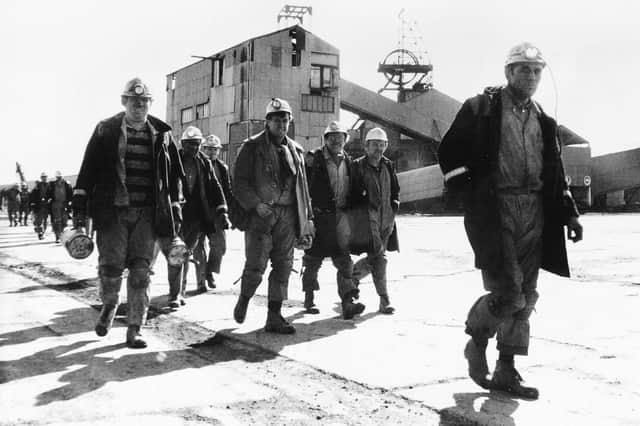
 











|
Signature Sponsor


October 2, 2022 - John Goodchild in West Yorkshire Coalfield (2000) provides early references: ‘[The colliery] was sunk under a lease of 1865 and opened from 1869 to the Haigh Moor seam…It was the first modern colliery in the vicinity of Pontefract.’ The author points out that coal had been worked from the upper seams in that area since medieval times. For two days in May 1870, Jos Mitchell, of the Worsboro Dale Foundry, exhibited one of the largest pulley wheels ever made for a colliery, in Peel Square, opposite the Barnsley Chronicle office. The wheel was one of a pair which had been made at the foundry for Glasshoughton colliery. It measured 19 feet in diameter – making the circumference nearly 60 feet – and weighed four tons. Glasshoughton colliery was the scene of a fire on November 19, 1875. Around 10pm, the night men and boys, numbering 73, were lowered to the pit bottom. An hour later it was noticed the head gearing or pulley supports were in flames. The screens and lamp room were also ablaze. The glare of the fire was seen for miles around, and very soon attracted a crowd of over 2,000. The draught in the down-cast shaft, instead of carrying into the pit pure air, was taking down dense volumes of smoke, together with showers of sparks. After the fire had been burning for seven-and-a-half hours, descent into the pit was found to be safe. The imprisoned miners below were drawn back to the surface four at a time. They were all suffering from the smoke and the anxiety they had experienced, but there were no fatalities. On the following day at 10pm, another incident occurred when two men were being lowered into the pit by the enginemen. On nearing the bottom, they were thrown from the cage and drowned in the well at the bottom of the shaft. A year later, J.D. Thorp was noted in an advertisement as the sole proprietor of the Glasshoughton collieries. He announced that after the disastrous fire he ‘was now in a position to offer the best quality of each kind of Coal, screened by the best-known machinery – invented and patented by himself…’ A small number of incidents were recorded in the press during Glasshoughton’s life span concerning the mistreatment of pit ponies. At the West Riding Court, Pontefract, during August 1890, a Glasshoughton colliery pony driver was sent to prison for one month with hard labour, without the option of a fine. He had beaten a pony in his charge with an iron ‘locker’. The Bench said they were ‘determined to put down cruelty to animals.’ There was much unrest amongst the country’s coal mining communities due to major industrial action in 1893. On September 7, 1893, two miners were killed by troops in Featherstone. Two days later it was reported: ‘Special messengers arrived at Castleford, announcing the approach of a large mob from the direction of Castleford, and 50 soldiers were thereupon despatched to Glasshoughton colliery where a magistrate was in attendance to read the Riot Act if necessary.’ The Glasshoughton Collieries Ltd prospectus was advertised in July 1902 where some significant details were given. The company was formed to acquire from William Moore Wood, of Purston Hall, Pontefract the Glasshoughton Collieries. Wood had purchased the collieries in 1898. The sinking of the Silkstone seam was completed in 1901. Before the close of 1902, the colliery’s total output was expected to be 625,000 tons per annum. There was said to be ‘ample house accommodation for workmen in the neighbourhood.’ Safety in the mine was always of paramount importance and every effort was made to strongly enforce certain rules. For taking a match into the workings of Glasshoughton colliery, a miner was fined 12s 6d, or seven days imprisonment, at Castleford on March 13, 1907. Some reports of injuries to miners in the course of the work were quite horrific. A haulage driver named John Robinson, aged 19, had his arm torn off at Glasshoughton in January 1914 and died on the way to the infirmary. It is quite shocking today to learn of injuries to very young miners. During March 1922 a verdict of ‘Accidental Death’ was returned at an inquest on Stephen Pycroft aged 14. He lost is life in the Beeston Seam of Glasshoughton colliery. While conveying a party of Glasshoughton miners to work in August 1923, a motorbus overturned. All the occupants were thrown out but only one man was injured. He had been sitting alongside the driver and was thrown through the windscreen. The men were too shaken to continue to work and returned to their homes. |
 








|
